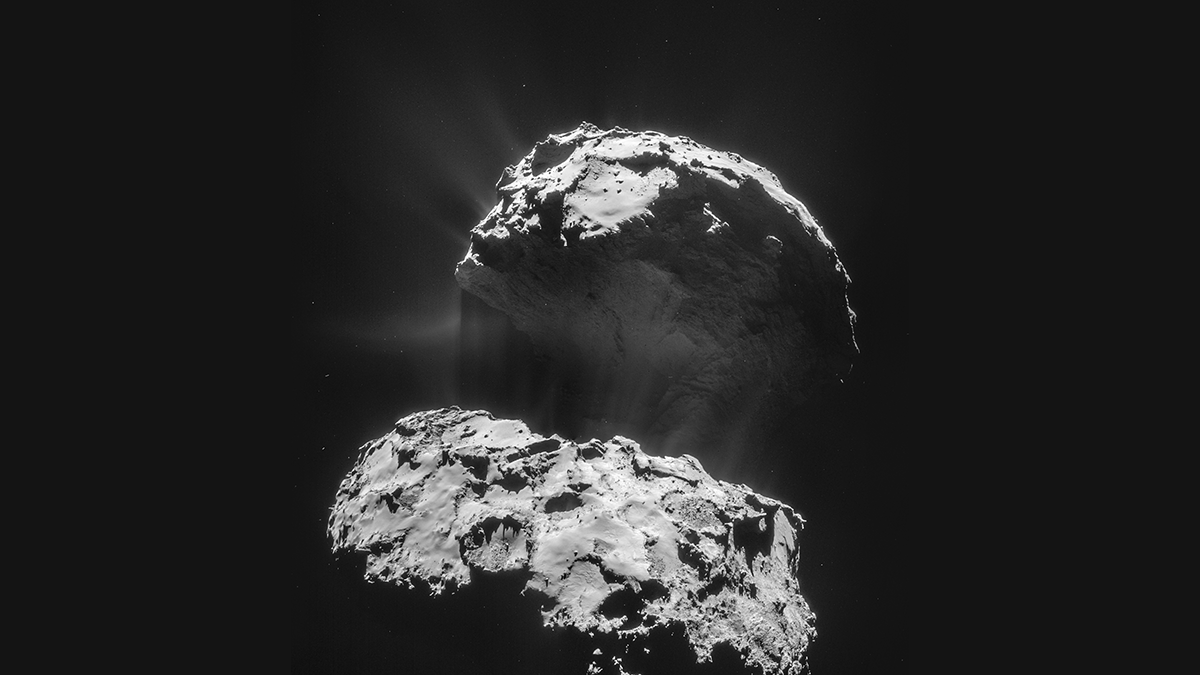Editors’ Highlights are summaries of recent papers by AGU’s journal editors.
Source: Journal of Geophysical Research: Planets
A large portion of the surface of the nucleus of Comet 67P/Churyumov-Gerasimenko was observed, by the Rosetta spacecraft, to be covered with smooth sedimentary material, likely formed as the surface breaks down during the ice sublimation. Although previous studies have documented changes in these smooth surface regions, none, until Barrington et al. [2023], attempted to map these surface changes on a global scale.
The global mapping of sediment transport performed in this study highlights how and when the sedimentary material is transported around the cometary surface, in turn providing important insights into transport mechanisms and redistribution pathways. Specifically, the authors have shown that the increasing solar insolation as the comet approached perihelion leads to increasing erosion of specific areas of the cometary surface followed by deposition and significant redistribution of the sedimentary material. The authors also highlight the importance of the surface topography, in addition to the illumination conditions, to generate the highly localized nature of erosion and deposition.
Finally, this study suggests the location of potential terminal sinks for the sedimentary material. Given that such sinks may contain and retain larger volumes of ice than other smooth regions, these specific locations could be interesting targets for future sample return missions, where it may be possible to probe the paleoclimate of the comet.
Citation: Barrington, M. N., Birch, S. P. D., Jindal, A., Hayes, A. G., Corlies, P., & Vincent, J.-B. (2023). Quantifying morphological changes and sediment transport pathways on comet 67P/Churyumov-Gerasimenko. Journal of Geophysical Research: Planets, 128, e2022JE007723. https://doi.org/10.1029/2022JE007723
—Naomi Murdoch, Associate Editor, JGR: Planets; and Laurent G. J. Montési, Editor in Chief, JGR: Planets

